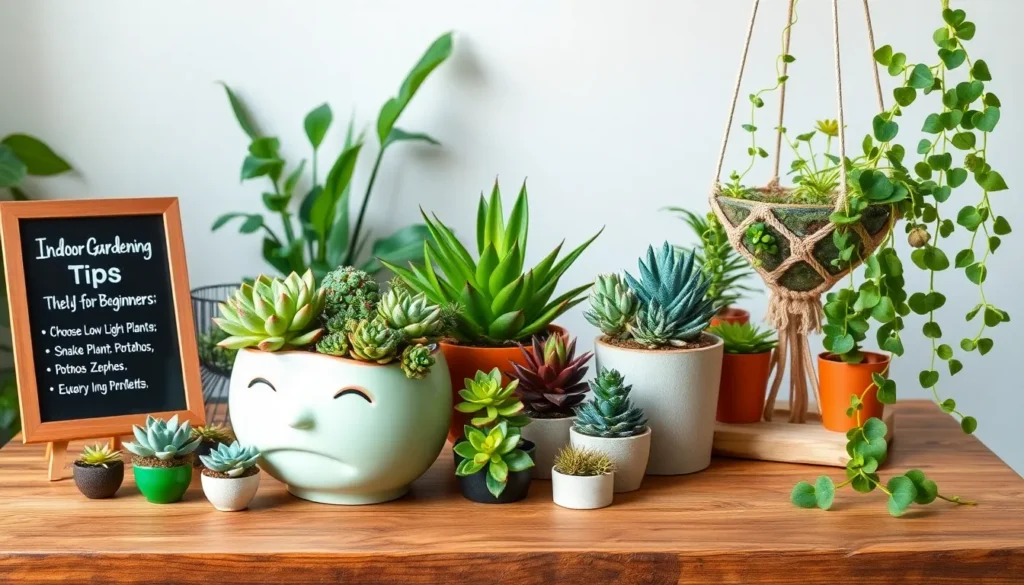Welcome to the vibrant world of indoor gardening, where the joy of nurturing plants transforms any space into a lush haven of tranquility. Whether you’re just starting with your first potted plant or have a seasoned green thumb seeking new adventures, this guide is brimming with tips that will inspire and empower your indoor gardening journey.
Here, you’ll discover practical insights that demystify the art of indoor plant care, making it accessible and enjoyable for gardeners of all levels. These design tips promise not only to enhance the aesthetic appeal of your home but also to improve air quality and boost your mood, offering a slice of nature’s magic right at your fingertips.
Dive into this guide with confidence, knowing that each tip is crafted to ensure your success and satisfaction with indoor gardening. Let’s embark on this rewarding adventure together, cultivating not just plants, but a sense of accomplishment and serenity in your everyday life.
Choose Low-Maintenance Plant Varieties
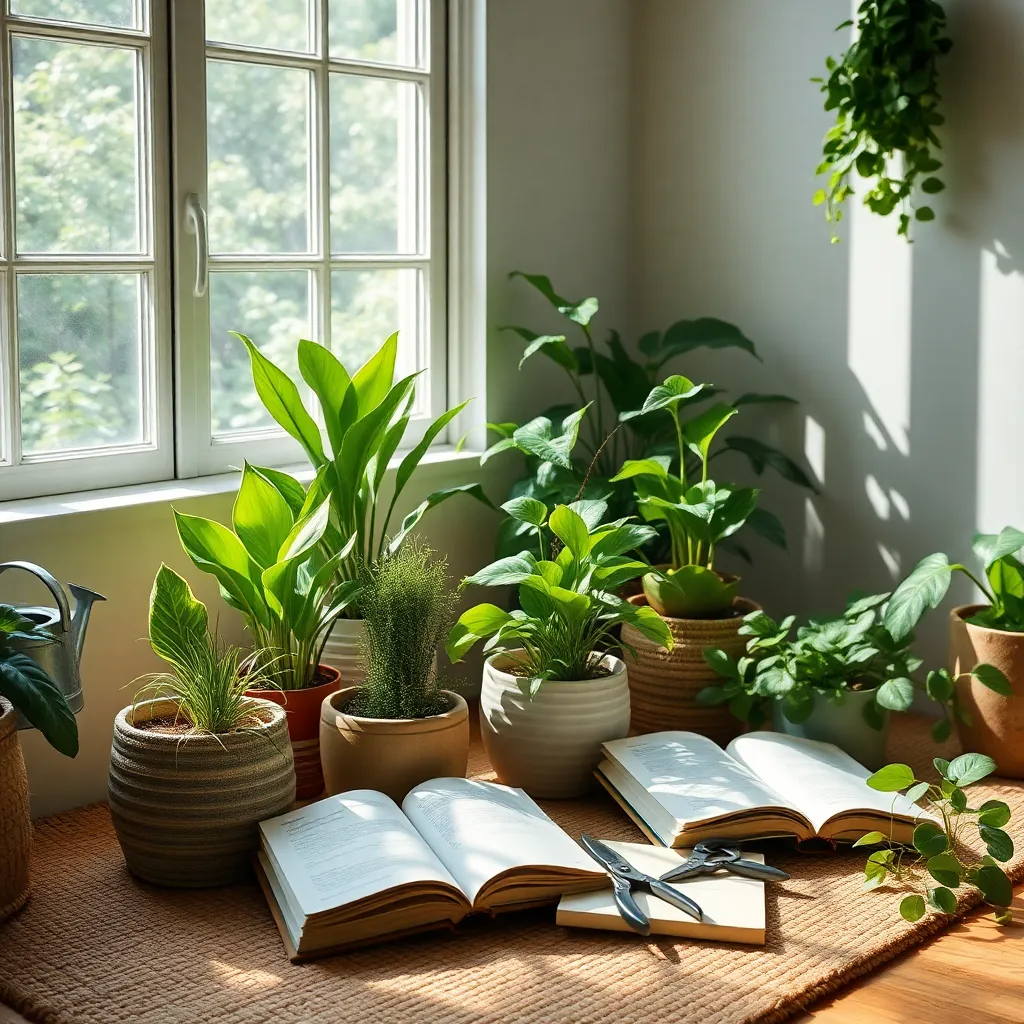
Choosing low-maintenance plant varieties is a great way to ensure success in your indoor gardening journey. Succulents, such as aloe vera and jade plants, are excellent choices because they require minimal watering and thrive in indirect light.
Another low-maintenance plant worth considering is the snake plant, also known as Sansevieria. It can tolerate low light conditions and only needs watering every couple of weeks, making it ideal for beginners.
For those who prefer trailing plants, pothos is an excellent option due to its resilience and adaptability. It can grow in both bright and low light and does well in a basic potting mix.
When setting up for low-maintenance plants, ensure you use well-draining soil to prevent root rot, which is a common issue with overwatering. Consider incorporating a mix of potting soil and perlite to improve drainage.
Regularly check your plants for pests, as even low-maintenance varieties can occasionally fall victim to them. Keeping a close eye and promptly addressing any issues will help maintain your plant’s health and vigor.
Position Plants Near Natural Light
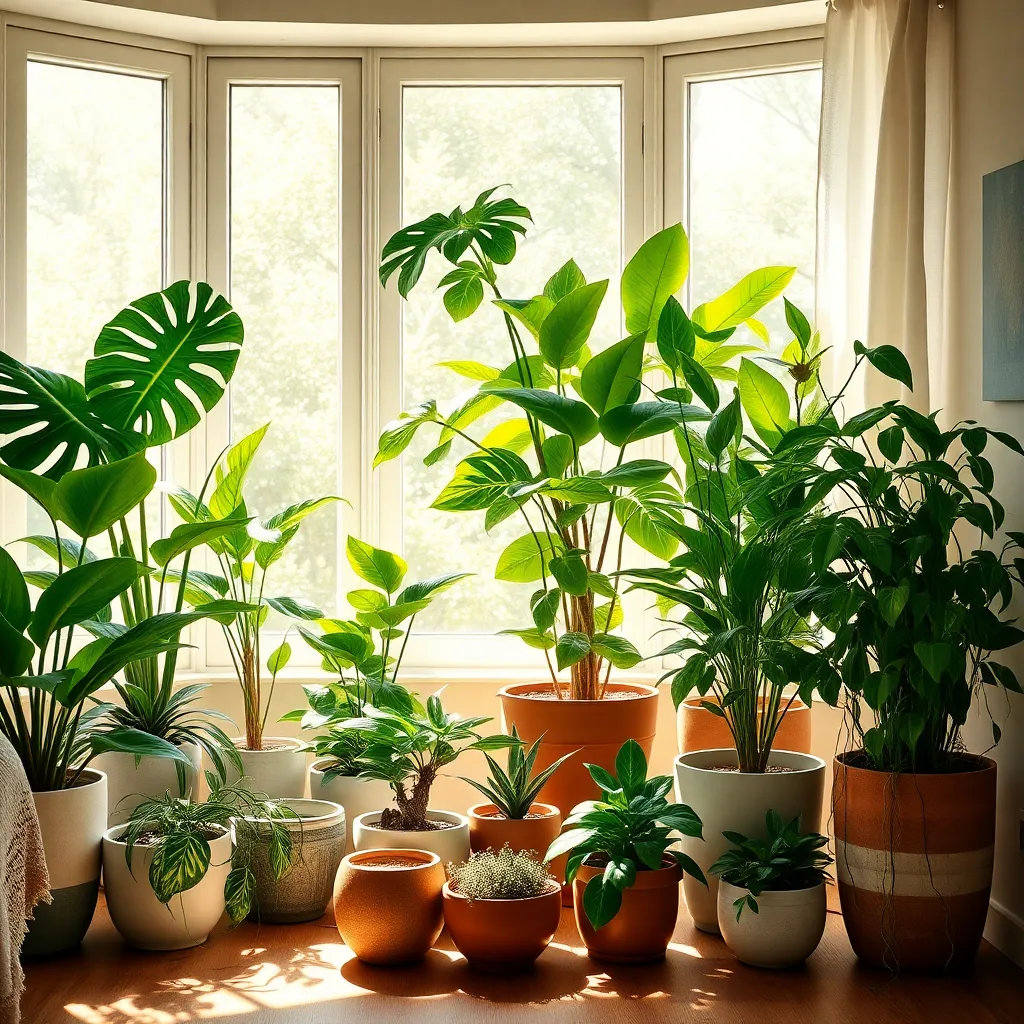
When growing plants indoors, positioning them near natural light sources is crucial for their health and growth. Most indoor plants thrive with about six to eight hours of indirect sunlight each day, so place them near windows that receive ample light.
Consider the orientation of your windows when positioning your plants. South-facing windows typically offer the most consistent light throughout the day, making them ideal for sun-loving species like succulents and cacti.
For those with limited direct sunlight, north-facing windows can still serve well for low-light plants such as pothos or snake plants. You might need to rotate your plants every few weeks to ensure even growth and prevent them from leaning towards the light source.
In less sunny spaces, supplement natural light with grow lights to meet your plants’ needs. Choose LED grow lights with full-spectrum bulbs, as they provide the necessary range of light wavelengths for photosynthesis, ensuring healthy plant growth indoors.
Use Quality Potting Soil
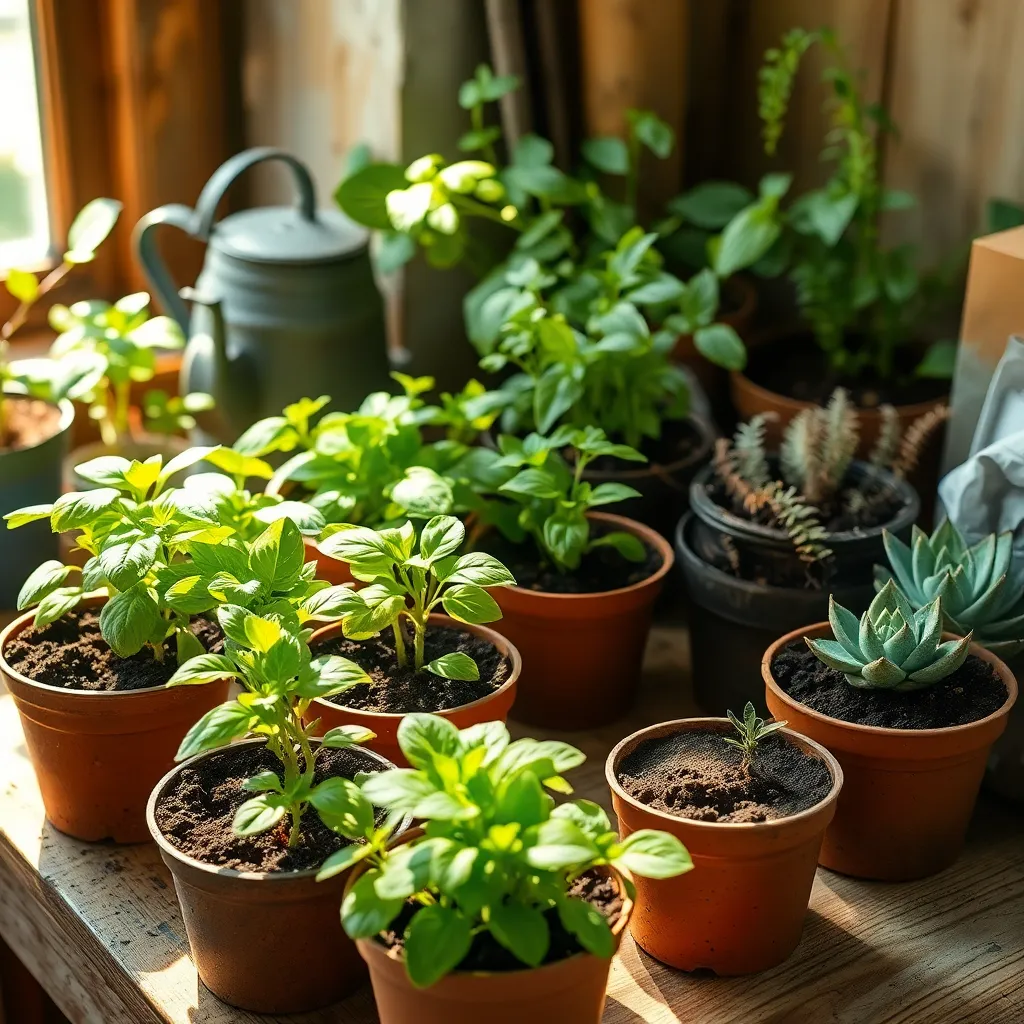
Choosing the right potting soil is crucial for the success of your indoor plants. Quality potting soil provides the necessary nutrients and drainage that plants need to thrive. It’s important to avoid using garden soil for indoor plants as it can compact easily and may introduce pests. Instead, opt for a well-draining, sterile potting mix specifically designed for indoor use.
Look for potting soil that contains a blend of peat moss, vermiculite, and perlite. These components help retain moisture while ensuring good aeration for the roots. For plants like succulents and cacti, choose a mix with extra sand or grit to enhance drainage. On the other hand, tropical plants benefit from soil that retains more moisture, so consider mixes with added coco coir or bark.
When repotting, it’s essential to moisten the potting soil before use. This helps reduce transplant shock and encourages roots to spread out more easily. Use your hands or a small shovel to mix water into the soil until it feels damp but not soggy. Always ensure that the pots you use have drainage holes to prevent water from stagnating and causing root rot.
For advanced care, consider adding organic matter like compost or worm castings to enrich the soil further. These natural amendments can enhance soil fertility and improve plant growth. Be cautious with fertilizing; most potting soils come with some nutrients already added, so start with fertilizing once a month and adjust based on your plant’s growth response. Enjoy experimenting with different potting mixes to see which ones your plants respond to best!
Water Consistently, Avoid Overwatering
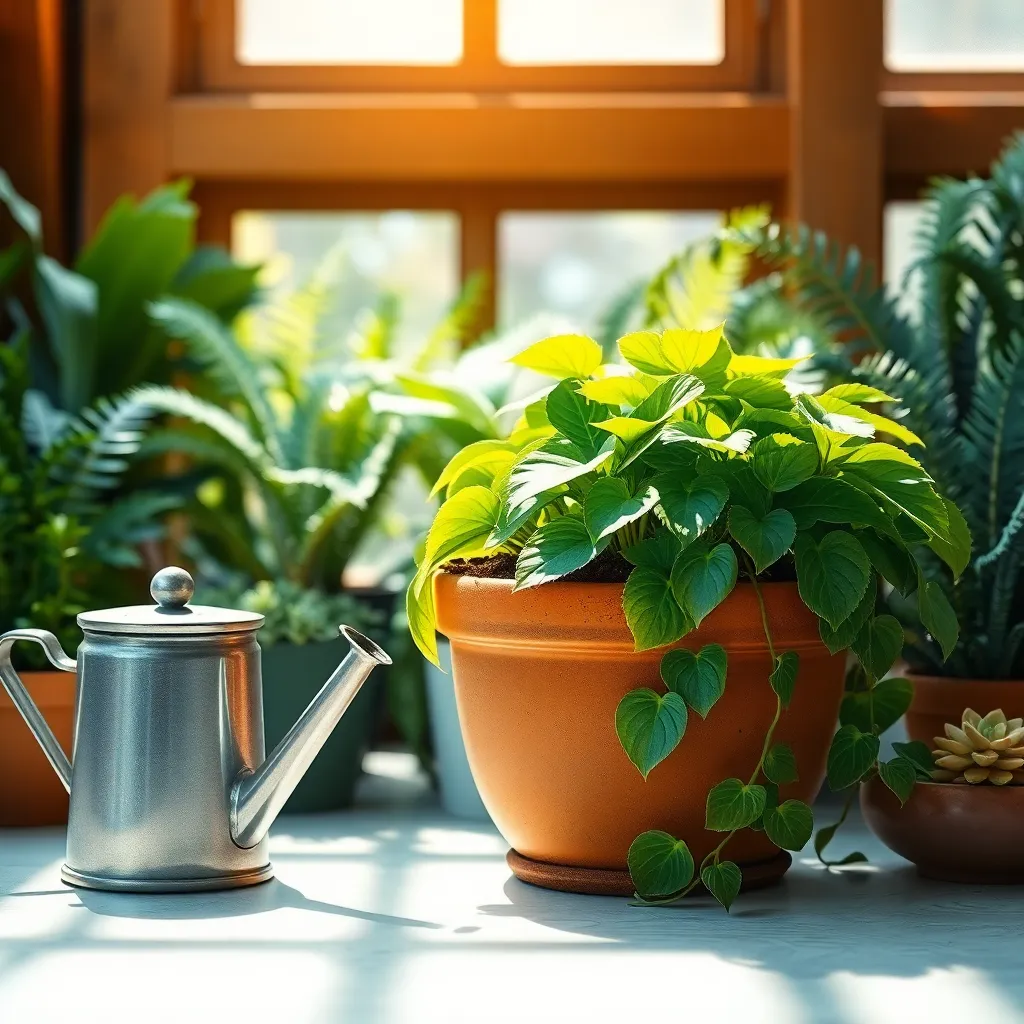
Proper watering is crucial for healthy indoor plants, but many beginners struggle with finding the right balance. Water consistently but avoid overwatering to prevent root rot and other moisture-related issues.
One effective method is to check the top inch of soil; if it’s dry, it’s time to water. Use a moisture meter if you’re unsure, as it can help you determine the soil’s moisture level more accurately.
Consider using pots with drainage holes to allow excess water to escape, which is vital for preventing waterlogged soil. Remember, different plants have varying water needs based on their natural habitats.
For example, succulents and cacti prefer their soil to dry out completely between waterings. On the other hand, tropical plants like ferns enjoy consistently moist soil, so adjust your watering schedule accordingly.
As an advanced tip, try using a breathable potting mix that includes materials like perlite or orchid bark to improve drainage. This will help maintain the delicate balance of moisture needed for thriving indoor plants.
Monitor Humidity Levels Regularly
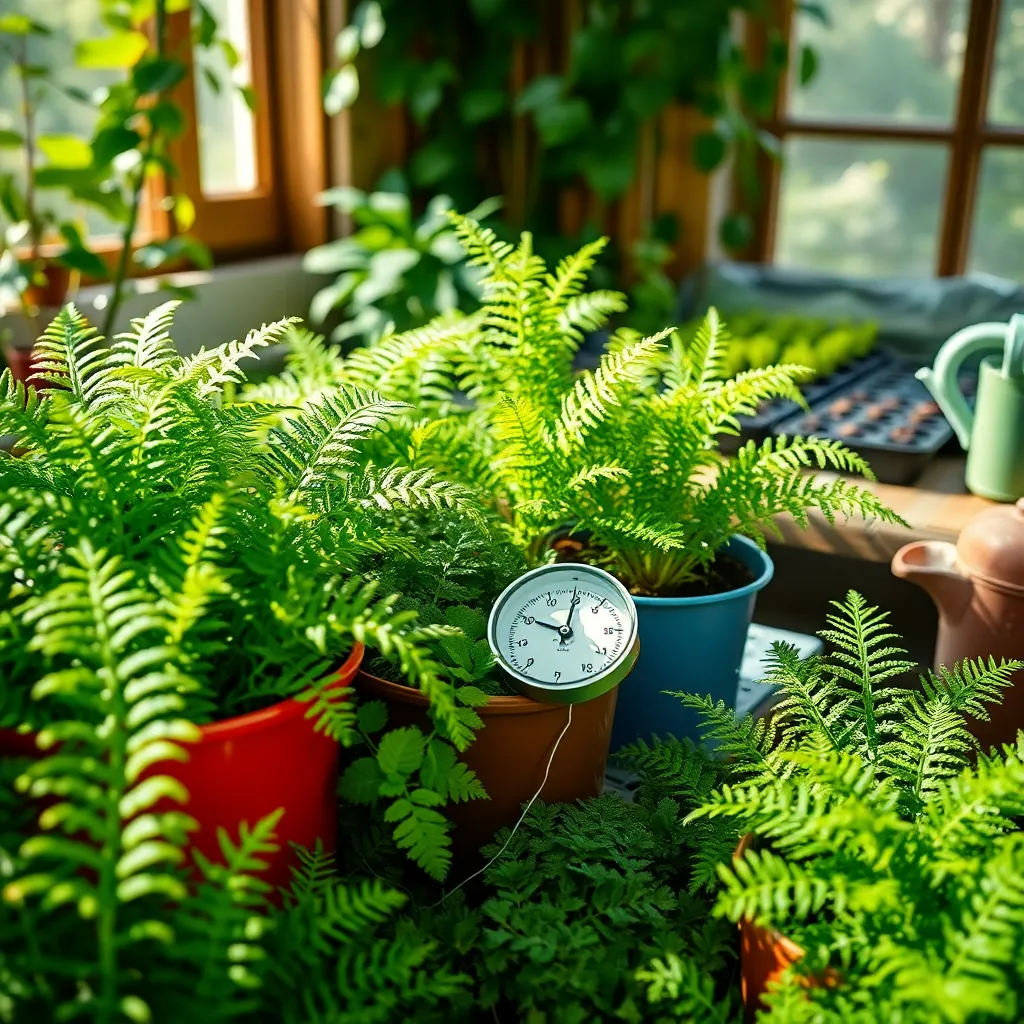
Understanding the humidity levels in your indoor garden is crucial for maintaining healthy plants. Many indoor plants originate from tropical climates and thrive in environments with higher humidity levels.
To keep your plants happy, regularly use a hygrometer to monitor the humidity in your home. Most indoor plants prefer humidity levels between 40% and 60%, which you may need to supplement, especially during winter months when heating systems dry out the air.
One simple way to increase humidity around your plants is by placing a small tray filled with water and pebbles beneath the plant pots. As the water evaporates, it will create a humid microclimate around the plants.
For those seeking a more advanced approach, consider investing in a humidifier to maintain consistent humidity levels throughout the day. This can be particularly beneficial for plants such as ferns and orchids, which require even higher humidity.
In addition to adjusting humidity, ensure your plants have proper airflow to prevent mold growth. Placing a small fan in the room can help circulate air and reduce the risk of fungal diseases.
Conclusion: Growing Success with These Plants
In your journey through the world of indoor gardening, we’ve unearthed five key concepts that can nurture not only your plants but also your relationships. First, we explored the importance of creating a nurturing environment, just as you would for a flourishing partnership. Next, we discussed the art of patience, understanding that growth takes time, whether it’s in your garden or with loved ones. We also delved into the significance of communication, akin to knowing the specific needs of each plant or partner. Fourth, we highlighted the power of consistency and routine, a cornerstone in both plant care and relationship building. Finally, we touched on the joy of shared activities, encouraging you to bond over gardening as a couple or family.
As an actionable next step, choose one plant to care for and involve your partner or family in its journey, fostering teamwork and shared achievement. We encourage you to bookmark this article as a valuable resource to revisit these relationship-enhancing tips. Remember, just as your plants will thrive with care, so too will your relationships flourish with attention and love. Embrace this green-thumbed wisdom, and let it guide you toward a future of blooming companionship.

